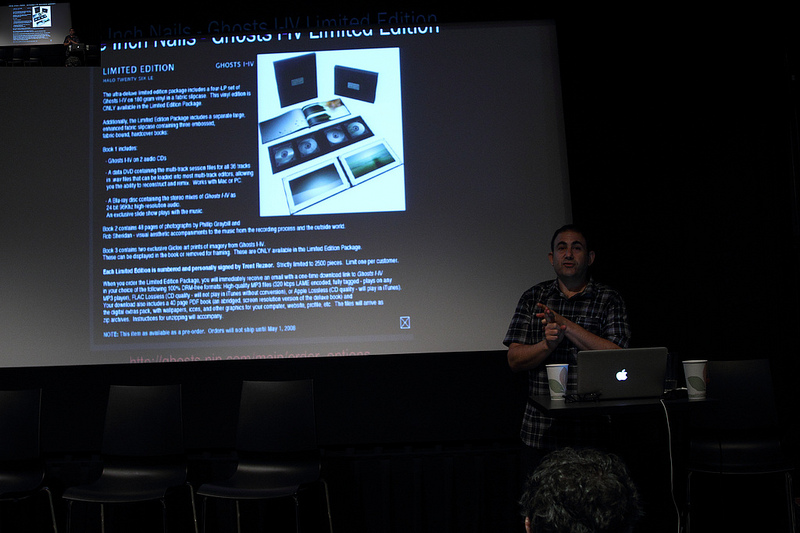Documentary Magazine Article – Documentary Distribution in Turbulent Times
During IDA’s Getting Real 2016 conference in September, Susan Margolin and I hosted a two part panel on the state of documentary distribution. I conducted a series of case studies with Nanfu Wang, from the critically acclaimed Sundance film Hooligan Sparrow. Christo Brock and Grant Barbeito’s Touch the Wall, and finally Keith Ochwat and Christopher Rufo’s Age of Champions. […]
Jon Reiss on BYODocs with Ondi Timoner
Had a great time with Ondi Timoner today filming for her BYODocs Show – seen here! We spoke a little about Think Outside the Box Office – but mostly about my docs Bomb It, Bomb It 2, Better Living Through Circuitry and even going back to Survival Research Laboratories and Target Video. Let me know […]
Top 10 Things Learned in the IFP PMD LAB

Top 10 Things Learned in the IFP PMD LAB By Jon Reiss I have had the good fortune to be involved in IFP’s Independent Filmmaker Labs for the past several years now and I have seen innumerable benefits to the films and filmmakers who participate. The Labs provide an opportunity for first-time filmmakers to […]
Creating Innovative Merchandise
Its the IFP Film Week in NYC where I just was for the IFP Lab and the new IFP PMD Lab – so with that in mind – I am posting my new clip about merchandise and an intro to innovative merchandise.
Top 5 Misunderstandings About Self Distribution
In the US many filmmakers are starting to get that they need to be responsible for distributing and marketing their films. We’ve been in this new paradigm since 2007 at least. But here in Europe – the mythology of white knights rescuing your film and you and carrying your film into the limelight is still […]
Identifying Your Audience
This weeks TOTBO Episode concerns the first steps of audience engagement. To do that you must evaluate your audience – which I propose in three steps: 1. Who is your audience (s)? 2. Where do they receive information and recommendations? 3. How do they consume media? In the episode I then talk about the importance […]
Creating a Unique Strategy For Your Film
Today’s video concerns the fundamental principle of how every film is different and needs a unique marketing and distribution plan. To create this plan, filmmakers need to examine: 1. Their Goals 2. Their Film 3. Their Audience 4. Their resources. I spend a little extra time on goals again talking about “Ride the Divide” and […]
Putting Chilean Film on the Map

On Thursday and Friday of this week (Oct 20-21) I will be at the Flyway Film Festival, presenting my two-day Think Outside the Box Office workshop on the ever-changing world of hybrid distribution and marketing. Today, though, I am thrilled to share a guest post from Chilean filmmaker Bernardo Palau whose first feature film ‘Saving […]
10 Ways in Which I Would Release Bomb It Today
Chris Horton asked me to write this post for the new Artist Services website that Sundance has set up. However, many filmmakers don’t have access to that site, and so I am posting it here on my blog for anyone to be able to read. Here is the post: In 2005 I started a documentary […]
How to Self-distribute Online: Using E-junkie to Create an Automated Business Part 2
Creating and selling a Quicktime file is a lot easier than creating and selling a DVD, yet many filmmakers seem to be reluctant to make their movies available as a download. I believe this stems from an overblown fear of piracy. As far as the indie world is concerned, I believe you’re losing money by not offering your video as a download.